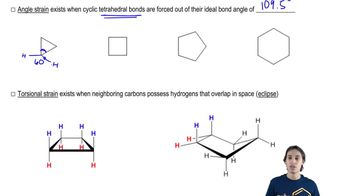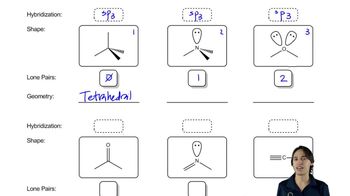You drew the Lewis structures of the following compounds and ion in Assessment 2.32. Predict their shapes around the central atom based on the Lewis structure.
(d) CO32-
 Verified step by step guidance
Verified step by step guidance Verified video answer for a similar problem:
Verified video answer for a similar problem:



 7:44m
7:44mMaster Molecular Geometry Explained. with a bite sized video explanation from Johnny
Start learning